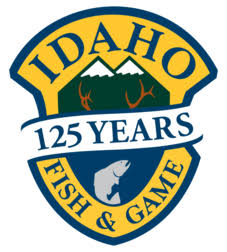Thanks a Hunter for Conservation
By Glen Wunderlich
Note: MDNR has provided the information on excise taxes and funding…
The contingent of hunters has been shrinking nationally for some years but recent news of growing numbers is cause to celebrate wildlife conservation. That statement may seem counter-intuitive to the uninformed, or even to those who’ve chosen to oppose hunting in any form. However, the fact is that hunting dollars fund conservation – and, not just for game animals but non-game species, as well.
Here is how our system works. Through hunting and fishing licenses, tags, permits, fees and special excise taxes on firearms, ammunition, bows and arrows and all manner of fishing gear, sportsmen and women have paid — and state fish and game agencies have invested — billions of our dollars since 1939 with the introduction of the Pittman-Robertson Wildlife Restoration Act.
“During this landmark year, everyone can do one simple thing – thank hunters for funding 75 years of wildlife restoration,” said Steve Beyer, research and management supervisor for the DNR’s Wildlife Division. “Thank a hunter for helping support Michigan conservation efforts.”
Beyer said that from 1939 through federal fiscal year 2012, Pittman-Robertson funds have provided the states and territories with $7.2 billion for wildlife conservation, restoration and hunter education. Michigan, which currently ranks fourth nationally in total P-R funding, has received $261 million since 1939. The P-R Act added an 11-percent excise tax on sporting arms and ammunition, which is built into the cost of the equipment and is paid by the manufacturers of arms and ammunition, and then passed on to us consumers.
These dollars are made available to the DNR in the form of grants for specific projects and are available on a 3-1 matching basis, meaning the DNR must come up with one dollar for every three received in P-R funds.
“The most common source of matching funds is money collected from the sale of hunting and fishing licenses,” Beyer said. And, with figures released last week by the U.S. Fish and Wildlife Service showing a nine-percent increase in hunters from 2006 to 2011, the news bodes well for conservation efforts.
One specific example is how hunters’ dollars have restored Michigan’s wild turkey population. Native to Michigan, our turkeys had completely disappeared from the state around year 1900 because of unregulated hunting and habitat loss.
With the help of $2 million in P-R funds and $1 million in restricted turkey funds (mostly from state hunting license dollars), the turkey population was rehabilitated to what it is today – a robust, sustainable and huntable population found across most of the state. It wasn’t the Humane Society of the United States that made it happen; it was the conservationist/hunters.
Hunters, however, are not the only beneficiaries of P-R funds. These funds are used for projects that restore and conserve any bird or mammal species, not just hunting-game species. Consequently, these funds have contributed to the restoration of some non-game species (such as bald eagles) and to preserve wild lands that not only benefit wildlife, but can be used and enjoyed by outdoor enthusiasts, like mushroom hunters, berry pickers, hikers, birders and others.
“The long and short of it is that P-R funds, along with license fees, have been and continue to be how we fund most wildlife management in Michigan and across the U.S.,” said Russ Mason, chief of the DNR’s Wildlife Division. “Without P-R funds along with the prevention of diverting license fees to other uses required to get them, conservation in North America would simply collapse. Not decline. Disappear, Mason said.
Yes, it’s time to thank a hunter.






